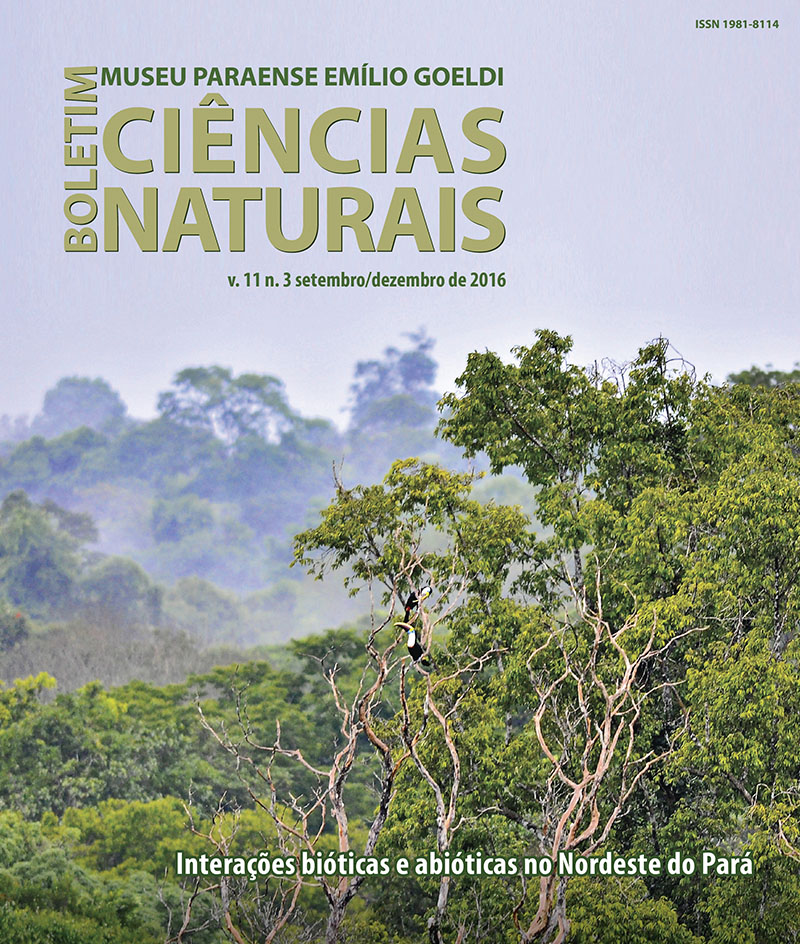Monthly and hourly variability of meteorological elements in the ESECAFLOR Project Experimental area of the Caxiuanã National Forest in Pará, Brazil
DOI:
https://doi.org/10.46357/bcnaturais.v11i3.421Keywords:
Historic Series, Seasonality, Statistical analysisAbstract
Tropical forests play an important role in regulating the climate. Variability in the patterns of the main meteorological elements are controlled by the interdependence of the flows of heat and water between the forest and the atmosphere. This research analyzes a range of meteorological data from the Caxiuanã National Forest, Pará, Brazil, from 2005 to 2013, including: rainfall, air temperature, relative humidity, global solar radiation, wind speed, and wind direction. Seasons were classified into wet season (December to June) and dry season (July to November). Two basic statistical methods were applied to test for differences by season and to assess the ‘synchronicity’ between seasonal variations of meteorological elements: a) non-parametric test (Mann-Whitney; p < 0.05) for hourly analysis, b) a circular statistics test (Watson-Williams method). We conclude that hourly wind direction and air temperature changed between wet and dry periods but wind intensity showed no significant change. There were also significant changes to the global radiation, rainfall and relative humidity. The variability of wind speed was synchronized with variability in wind direction, rainfall and the air temperature, but not with relative humidity and total solar radiation. These results generate a basic description of the physical mechanisms which control seasonal weather dynamics in tropical forests.
Downloads
Published
Issue
Section
License
Publication means fully assigning and transferring all copyrights of the manuscript to the journal. The Liability Statement and
Assignment of Copyrights will be enclosed with the notice of acceptance. All the authors must sign the document and return it to the journal.






